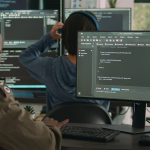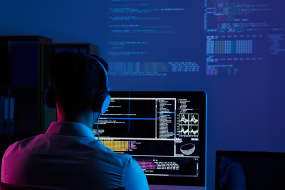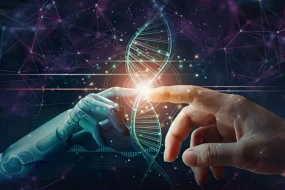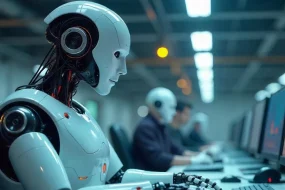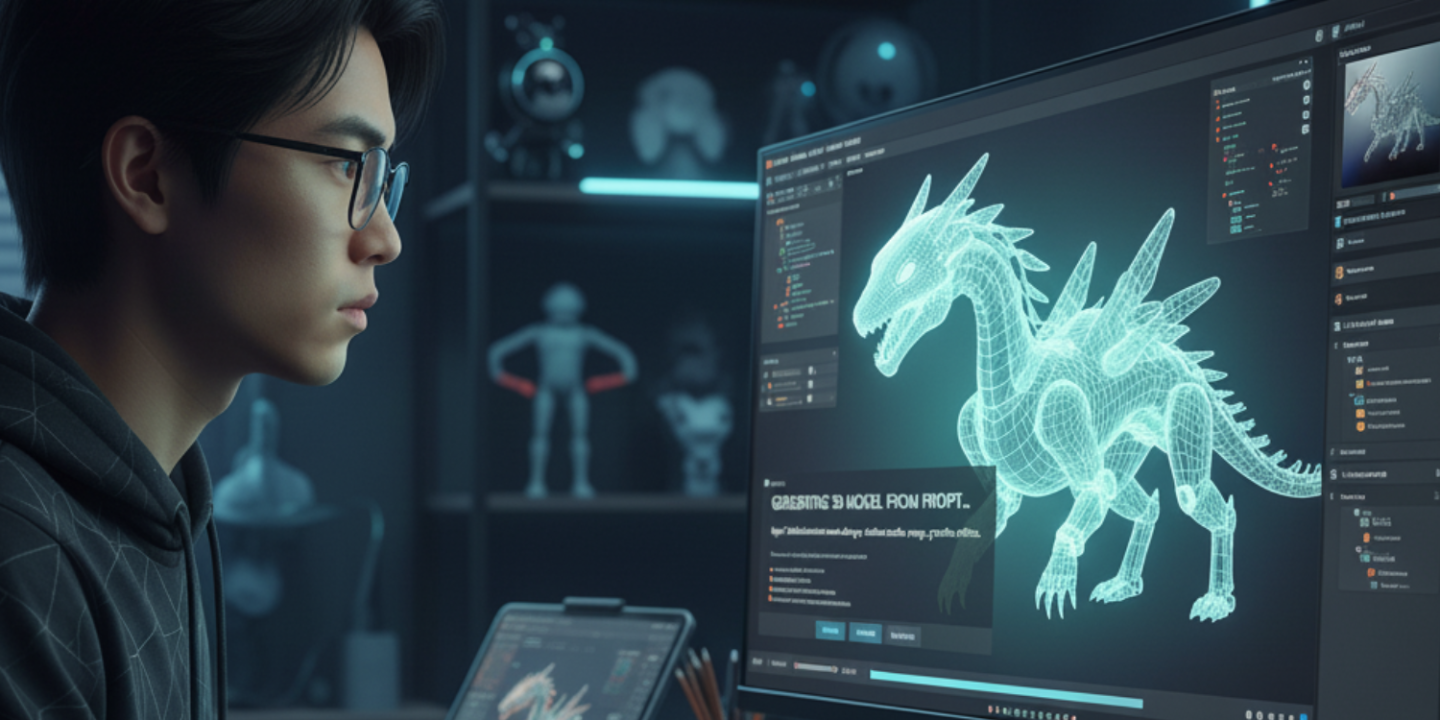

Creating 3D images is no longer just for big studios or expert design teams. Fields like gaming, online stores, building design, medicine, and schools now use 3D pictures more often to share ideas and create exciting experiences. But making professional 3D models used to need lots of resources, powerful computer programs, special skills, and costly software licenses.
This is where free AI models help out. These tools use smart computer learning to let people make 3D objects from simple written descriptions, pictures, or drawings. They cut down costs by a lot, make design work faster, and let more people create professional 3D images.
For businesses, whether a Custom Software Development Company making business apps, a Machine Learning Development Company building AI systems, or a Blazor Development Company adding 3D features to web apps, these models show what visual content creation will look like in the future.
This guide looks at five powerful free AI models you can use right now, what they can do, and how companies can add them to their work processes.
Creating 3D images is no longer just for big studios or expert design teams. Fields like gaming, online stores, building design, medicine, and schools now use 3D pictures more often to share ideas and create exciting experiences. But making professional 3D models used to need lots of resources, powerful computer programs, special skills, and costly software licenses.
This is where free AI models help out. These tools use smart computer learning to let people make 3D objects from simple written descriptions, pictures, or drawings. They cut down costs by a lot, make design work faster, and let more people create professional 3D images.
For businesses, whether a Custom Software Development Company making business apps, a Machine Learning Development Company building AI systems, or a Blazor Development Company adding 3D features to web apps, these models show what visual content creation will look like in the future.
This guide looks at five powerful free AI models you can use right now, what they can do, and how companies can add them to their work processes.
Factors to Consider Before Choosing a 3D AI Model
You must first know why a 3D AI model is good in professional work before you can look at particular models. This decision is not just based on how accurate it is, but it also relies on its flexibility, scalability, and integration ease. The following are the key things to be checked:
1: Quality of Output
Good 3D models must show details like textures, shapes, and correct sizes. Some models work great for quick testing, while others focus on making very accurate shapes suitable for manufacturing or medical pictures.
2: Input Flexibility
Others create 3D objects based on the description, and others create a 3D version based on the 2D image. The best models to be selected by a company should depend on the nature of input that fits into their workflows.
3: Processing Speed
For fields like gaming or augmented reality, speed matters a lot. Quick rendering lets people make prototypes fast, which gets products to market sooner. Models like InstantMesh focus on working efficiently while keeping good output quality.
4: Integration & Compatibility
Whether it’s adding to a front end development service, a Blazor-based app, or connecting with other AI frameworks, compatibility makes adoption smoother.
5: Licensing & Community Support
Since free tools often change quickly, community involvement ensures continuous improvements and easier problem-solving.
5 Leading Open Source Models to Generate 3D images
Let’s look at the five most important free AI models for making 3D images.
1. TripoSR
TripoSR is an advanced free model for fast 3D rebuilding from one 2D image. Made by Tripo AI working with Stability AI, it uses improvements in the Large Reconstruction Model (LRM) structure to rebuild textured shapes quickly.
TripoSR changes one image input into a complete 3D object, filling in shapes for hidden parts and making high-quality textures and forms.
It works well across different categories because it was trained on the Objaverse dataset (a big collection of 3D objects). This model works well for product showing, AR/VR, virtual testing, building mockups, and any workflow where the quick conversion of 2D images into usable 3D items matters. It uses an MIT licence.
Key Features:
- Single-image input → 3D mesh rebuilding (textured)
- Fast processing (~0.5 seconds on a strong GPU for simple inputs)
- Trained on the Objaverse dataset, which helps work across categories
- MIT license (free for changes, research, and many business uses, subject to license terms)
- Good community support and demo availability via Gradio and Hugging Face
2: InstantMesh
InstantMesh, from Tencent ARC’s Lab, is a free framework designed for efficient 3D mesh creation from a single image. It combines a multi-view diffusion model with a sparse-view rebuilding approach based on the LRM structure. In practice, it creates a 3D mesh in under roughly 10 seconds (depending on hardware), making it work well for rapid testing and creative workflows where speed matters.
InstantMesh also includes shape supervision (depth, normals) and a differentiable iso-surface extraction module to make mesh quality better. It’s licensed under Apache-2.0. The model works particularly well in online store previews, gaming items, AR/VR experiences, and any situation where multiple views are needed quickly.
Key Features:
- Mesh creation from a single image (~10 seconds) with good shape quality
- Uses multi-view diffusion to create consistent views, then rebuilds shapes using sparse rebuilding + iso-surface extraction
- Depth and normal supervision to improve shape correctness
- Apache-2.0 license, meaning relatively permissive for many uses (check exact terms)
- Good scalability and performance; better than prior baselines for image-to-3D tasks in benchmarks.
3: Stable Zero123 (Zero123 / Stable Zero123)
Stable Zero123 (also called Zero123) is an image-conditioned diffusion model that creates new views of an object given a single input image, enabling a kind of view-consistent and multi-perspective understanding of 3D shapes. The model does not directly output a full mesh by default but is often used in workflows (with methods like Score Distillation Sampling) to get 3D meshes or NeRFs from its created views.
Stability AI has released Stable Zero123 with improvements in data rendering, camera elevation conditioning, and higher quality training datasets, especially for research and non-business use. It’s helpful for showing, creative content, research, and projects exploring multi-view consistency.
Key Features:
- Creates new views (multi-perspective) from a single image, which helps with seeing 3D structure.
- Improved elevation/camera conditioning for better view consistency.
- Enhanced training datasets with filtered, high-quality 3D objects (e.g., from Objaverse) to reduce artifacts.
- Licensing for research / non-business use, with a “business version” depending on membership / terms in some cases.
- Pipeline can be extended (via SDS, or other rendering) to mesh/NeRF extraction, which enables use in more interactive or asset-creation workflows.
4: Hunyuan3D 2.5
Hunyuan3D 2.5 is an advanced free 3D diffusion model framework by Tencent focused on creating high-quality, textured 3D items. It builds on Hunyuan3D 2.0, making both the shape and texture creation pipelines better.
The model introduces a new shape foundation (called “LATTICE”) trained on very large, high-quality datasets, improving surface detail, mesh smoothness, and condition-alignment (i.e. how well the 3D matches the source image or prompt).
Texture creation is upgraded with physically-based rendering (PBR) elements, combining multi-view structure to produce realistic and consistent textures. Hunyuan3D 2.5 works well for uses like product showing, gaming, building design, and any environment where realism matters.
Key Features:
- Two-stage structure separating shape foundation (“LATTICE”) and texture-creation module.
- High-quality shapes with smooth, clean mesh surfaces and better shape detail.
- Enhanced texture creation using PBR techniques and multi-view consistency.
- Scaled model size (billions of parameters) and large, curated datasets to improve realism.
- Free release of models, training code, and user tools (allows professional or community use).
5: 3DTopia
3DTopia is a large text-to-3D creation model with hybrid diffusion priors, designed to produce high-quality 3D items within a relatively short time, especially for testing and creative content workflows. It uses a two-stage system: first creating a rough 3D shape via a tri-plane latent diffusion model, then refining the model’s texture and appearance with both latent and pixel-space diffusion techniques.
The model is trained on a cleaned and captioned large Objaverse dataset to provide consistency in the quality of output. Due to its hybrid nature, 3DTopia provides a balance between speed and visual quality, which makes it suitable in the context of gaming, advertising, or virtual/AR settings.
Key Features:
- Hybrid diffusion pipeline: rough shape first, then texture refinement.
- Trained with Objaverse dataset, cleaned and captioned for consistency.
- Supports text-conditioned creation for flexible creative control.
- Faster turnaround for usable 3D items compared to older, more computationally heavy models.
- Capable of producing models with both decent shapes and texture detail, useful for showing and real-world uses.
Conclusion
The emergence of free AI-based models like TripoSR, InstantMesh, Magic123, Shap-E, and hybrid frameworks is an indication that the 3D content creation era has changed. They allow startups, large companies, and creative workers to produce 3D images of professional quality within a short period and at an affordable price.
Using a machine learning development company, a Blazor development company, or a custom software development company, businesses can incorporate these tools into their scalable systems to provide value to their clients. Combined with strong UI/UX design and front end development services, these AI models unlock new ways to communicate, design, and innovate.
The future of 3D belongs to organizations that embrace AI-driven creativity today.
Pratik Patel
Pratik Patel is the CEO of Virtual Coders and an experienced engineer passionate about technology and innovation. He shares valuable insights on our blog, covering topics from the latest tech trends to conversion optimization, to inspire and empower readers in the digital world.
Search
Recent Post
How to Build a Demand Forecasting Software?
- 1 hour ago
- 11 min read
Why Offshore Engineering Teams Are the Future
- 2 weeks ago
- 7 min read
9 Ways Digital Transformation is Shaping Product
- 3 weeks ago
- 5 min read

